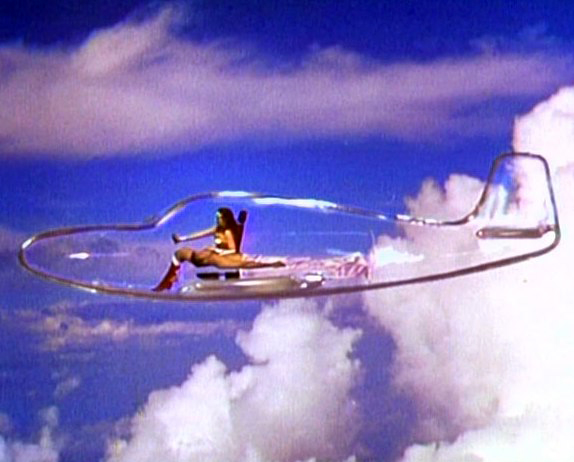Jay Honeck
Touchdown! Greaser!
One of the great things about owning and operating an aviation themed hotel is that I get to meet pilots from all walks of life, with all sorts of experiences. After ten years, I *thought* I had met and heard them all, from Blackbird pilots and astronauts to the guy who flies the restored Boeing Model 40C.
Well, tonight one of our drive-in guests started signing the pilot's logbook we keep in the lobby. This is USUALLY a sign that the poor guy has lost his medical, or the economy has driven him out of flying -- or, sometimes, the weather just forced him into the 0' AGL flight to the island.
It's always a sensitive topic to broach -- so I asked "What're you flying nowadays?", figuring that was gentle enough.
"An RQ-7A" was his immediate response, without even looking up. Hmmm... I'm pretty good with aircraft, and usually can't be stumped -- but this guy had me. So, I said "I'm familiar with the RV-7A, but not the RQ-7A -- what's that?"
He chuckled. "Military drone." Ah-ha! I laughed, and told him that was cheating! His wife thought THAT was funny, and she went on to tell me all of his ratings, and what he's flown, and that he's a CFII, A&P, and IA! Wow!
I figured he was one of the Predator drivers out of Corpus (we deal with a TFR for them over the Southern tip of the island every day), but, no, he flies the RQ-7A out of the back seat of a highly modified Humvee in Afghanistan! Wow -- amazing stuff.
After a bit of chit chat, I broached the possibly sensitive topic of drones in the national airspace. As most of us know, this issue has become a hot one, with the FAA wanting to let drones share the airspace with the rest of us.
So I got right to it, and asked him what he thought about the issue? His response was quite interesting, and one I had never thought of before: "Require all drone pilots to be commercially rated, and hold them to the same enforcement standards as any other commercial pilot."
"Okay", I responded -- but "what about see-and-avoid?" How are you going to stay visually separated from VFR traffic?
He just chuckled at that one. Between him and his weapons officer, he said, he would see and avoid us LONG before we became an issue. As he put it "We've got tools on board that make your Mark One eyeballs seem pretty substandard."
Infrared, for one. He can see our heat signature long before we're in visual range. Multiple cameras, and multiple screens, for another. His view of the world from inside that Humvee is better than what we can see sitting in the actual aircraft. And, of course, they have TCAS, too.
It was a fascinating conversation, and I must admit that I feel MUCH better about drones in general, and sharing the airspace with them.
Well, tonight one of our drive-in guests started signing the pilot's logbook we keep in the lobby. This is USUALLY a sign that the poor guy has lost his medical, or the economy has driven him out of flying -- or, sometimes, the weather just forced him into the 0' AGL flight to the island.
It's always a sensitive topic to broach -- so I asked "What're you flying nowadays?", figuring that was gentle enough.
"An RQ-7A" was his immediate response, without even looking up. Hmmm... I'm pretty good with aircraft, and usually can't be stumped -- but this guy had me. So, I said "I'm familiar with the RV-7A, but not the RQ-7A -- what's that?"
He chuckled. "Military drone." Ah-ha! I laughed, and told him that was cheating! His wife thought THAT was funny, and she went on to tell me all of his ratings, and what he's flown, and that he's a CFII, A&P, and IA! Wow!
I figured he was one of the Predator drivers out of Corpus (we deal with a TFR for them over the Southern tip of the island every day), but, no, he flies the RQ-7A out of the back seat of a highly modified Humvee in Afghanistan! Wow -- amazing stuff.
After a bit of chit chat, I broached the possibly sensitive topic of drones in the national airspace. As most of us know, this issue has become a hot one, with the FAA wanting to let drones share the airspace with the rest of us.
So I got right to it, and asked him what he thought about the issue? His response was quite interesting, and one I had never thought of before: "Require all drone pilots to be commercially rated, and hold them to the same enforcement standards as any other commercial pilot."
"Okay", I responded -- but "what about see-and-avoid?" How are you going to stay visually separated from VFR traffic?
He just chuckled at that one. Between him and his weapons officer, he said, he would see and avoid us LONG before we became an issue. As he put it "We've got tools on board that make your Mark One eyeballs seem pretty substandard."
Infrared, for one. He can see our heat signature long before we're in visual range. Multiple cameras, and multiple screens, for another. His view of the world from inside that Humvee is better than what we can see sitting in the actual aircraft. And, of course, they have TCAS, too.
It was a fascinating conversation, and I must admit that I feel MUCH better about drones in general, and sharing the airspace with them.


